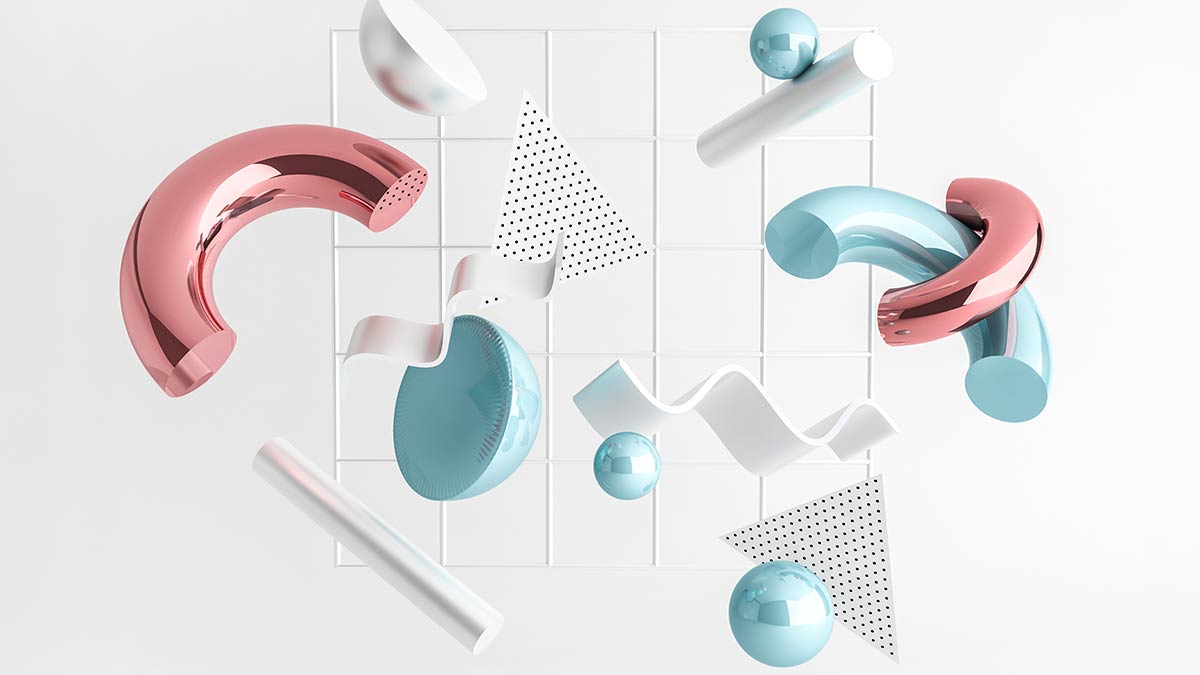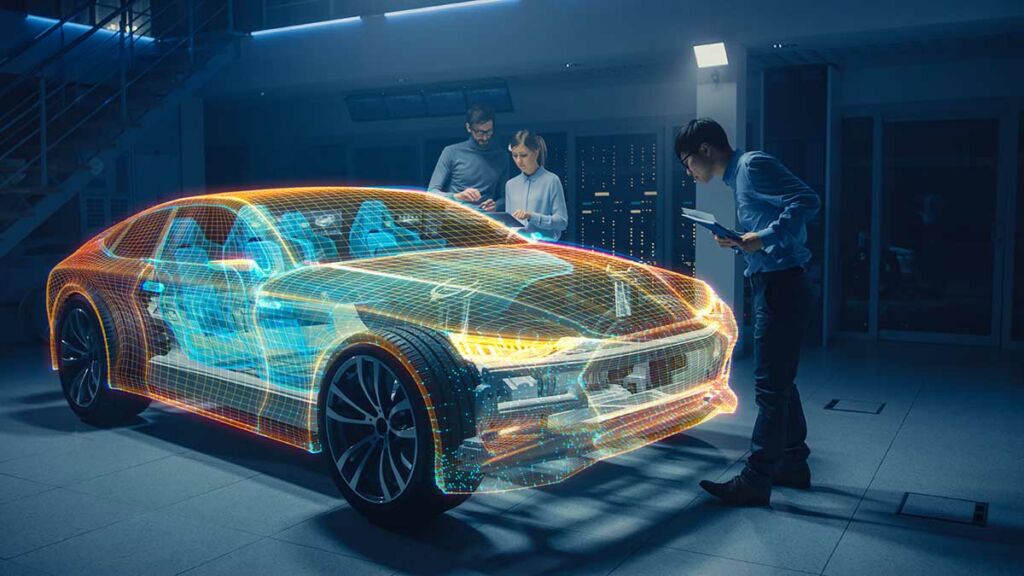Design is time- and context-specific. This is why social and economic trends are often the source of inspiration for new products, services, and user experiences. In today’s post, we look at the key design trends that are likely to impact the design industry, with a special focus on automotive design.
Product designers aim to create attractive goods that meet the needs of consumers. But since these needs change over time, the discipline is constantly adapting to new trends.
The factors affecting design trends can be internal (like the development of new materials or new technologies) and external (social, demographic, and economic changes). Here’s an overview of the key design trends to watch this year.

© anberization/AdobeStock
Top design trends for 2022
Human-centered design
Covid-19 restrictions highlighted the need for human connection. They’ve also prompted designers to come up with ways of enabling connections in areas other than face-to-face contact. The digital world is a prime candidate for this, given the increased amount of time people have been spending online. As a result, we can expect one of the top design trends this year to be the development of online products created with human-centered design in mind.
Safety and transparency as design priorities
During the past two years, people have reconsidered the place safety should have in their personal and work lives. Consumers are becoming increasingly more health and safety conscious, so product designers should be proactive and anticipate how to best present their solutions to the public. One way of doing this is providing transparent information about product, materials, and packaging safety data.
Personalized experiences
Personalization drives engagement, loyalty and productivity. The technology that allows higher customization levels is maturing fast across many industries. A higher degree of personalization has been greatly enabled by artificial intelligence and machine learning, which are becoming integral elements of design. These technologies set the foundation for new design trends where personalization is center-front.
The return to creativity
During the past two years, designers have been focused on adapting to new environments and constant change. This has reduced the time available to design and innovate. As the dust settles, design firms are starting to invest in tools and technologies that enable the return to creativity and that meet communication and collaboration needs. The most successful tools will accommodate all work styles, whether they’re in person, remote or hybrid.
2022 Design Trends In The Automotive Sector
The automotive industry is usually an early adopter of design trends, and is largely influenced by external economic and supply chain factors. The events of 2020 underscored the need to quickly pivot and adapt in order to survive. Some of the design trends that have emerged since are likely to become consolidated during 2022.
Sustainability
Due to its impact and scope, sustainability spearheads the list of automotive design trends for 2022. Some actions already taking place include:
- A focus on transparency and traceability across the entire supply chain. An example is BMW’s closed-loop material cycle.
- Shifting towards data-driven design and engineering so OEMs can track and reduce emissions throughout the vehicle’s lifecycle.
- The use of natural fibers, not only in upholstery but also in electric battery separators.
Autonomous driving
In 2021, there were 15 companies involved in the creation of automated driving systems. This development has implications for design, as it allows for a more flexible configuration of space. For example, Audi has already suggested that pedals and steering wheels could become redundant in driverless cars. These elements could be removed and make room for new in-vehicle experiences, where spacious interiors, integrated technology, and a feel-good ambiance would take precedence. In other words, autonomous driving sets the scene for a new paradigm where cars are more than just a means of transportation.
Electrification
Although closely linked to sustainability, electrification has emerged as a distinct design trend.
Mercedes’ Vision AVTR exemplifies the close connection between these two trends. This model features four electric motors and the world’s first graphene-based battery. Thanks to its unique composition, the Vision ATVR’s organic cell battery keeps the car going for over 700 miles without needing any toxic metals or rare earths. What’s more, the vehicle is fully recyclable. As an anecdote, the Mercedes team gave a working prototype to a board member so they could use it as garden compost.
The Vision AVTR sets an inspirational standard and shows how new sustainable materials and EQ power reinforce each other and take design and performance to a new level.
Digitalization
Digitalization has been touted as the future of automotive design for quite some time. For example, in 2019 Porsche published a piece on the impact of digital transformation on the entire car development process, highlighting benefits like reducing prototype numbers to the minimum necessary or data-driven testing.
This year, digital-first will be a. design trend to watch. This may mean investing in proprietary software development and entering partnerships with tech giants to design vehicle operating systems that no longer depend on horsepower.
Digitalization also applies to the retail experience. The challenge is how to present a vehicle to buyers while ensuring that every touchpoint of the showroom experience is available in the virtual world.
Health-focused car design
Environmental and health consciousness impacts purchasing decisions. As a result, automakers are incorporating health and well-being into design thinking. Examples include in-car air purification, Nissan’s drunk-driving prevention features, Ford Explorer’s Mindful mode, introduced back in 2019, and additives with anti-microbial properties.
It seems clear that Health, Wellness, & Wellbeing (HWW) are likely to evolve as distinct design trends for OEMs between now and 2025.
Consolidation of AR & VR technology
Augmented and virtual reality are already used by some of the top car manufacturers, including Mazda, Jaguar, and BMW. This is only the start, considering that forecasts suggest that the combined AR and VR market might be worth more than $670bn by 2025.
Currently, design applications are limited to real-time data-rich dashboards, but the next steps may involve a design trend called AR windshield displays, an upgrade on intelligent terrain mapping, which is already used by Mercedes-Benz. The applications of AR to windshield displays could include obstacle warning, real-time weather alerts, and parking assistance.
Hot 2022 trend: Virtual reality and its application to design
Virtual reality has endless potential in car design. From 2022 on, we expect to see a more widespread use of VR applications in the automotive design industry.
For example, VR software provides a full-feature 3D design environment that supports every aspect of design. With this tool, you can bring ideas to life with intuitive gestures and assess their impact in real-life scenarios. Creation, curation and collaboration take place in the same interface, seamlessly and with a minimal learning curve.
This software is more than just a design aid: it can completely modernize the design process and takes its rightful place between upcoming design trends. Some of its key advantages are:
- Eliminating redundancies and multiple media transfers between 2D and 3D work.
- Reducing time to market by up to 80%.
- Improving communication between teams irrespective of their location.
- Enabling one-to-one and team reviews and changes in real time.
- A virtual taping tool for realistic and accurate surfacing.
- Simulation function featuring various lighting and scenario conditions.
All of this is done in a secure and encrypted environment. When you look at what your team can achieve with flyingshapes, it’s obvious why VR is one of the hottest design trends this year.
Conclusion
The year ahead is packed with exciting trends in technology and design thinking. The implications for automotive design are far-reaching, since new design trends and technologies can modernize both the design process and the in-vehicle experience. We’re confident that you won’t look back.

